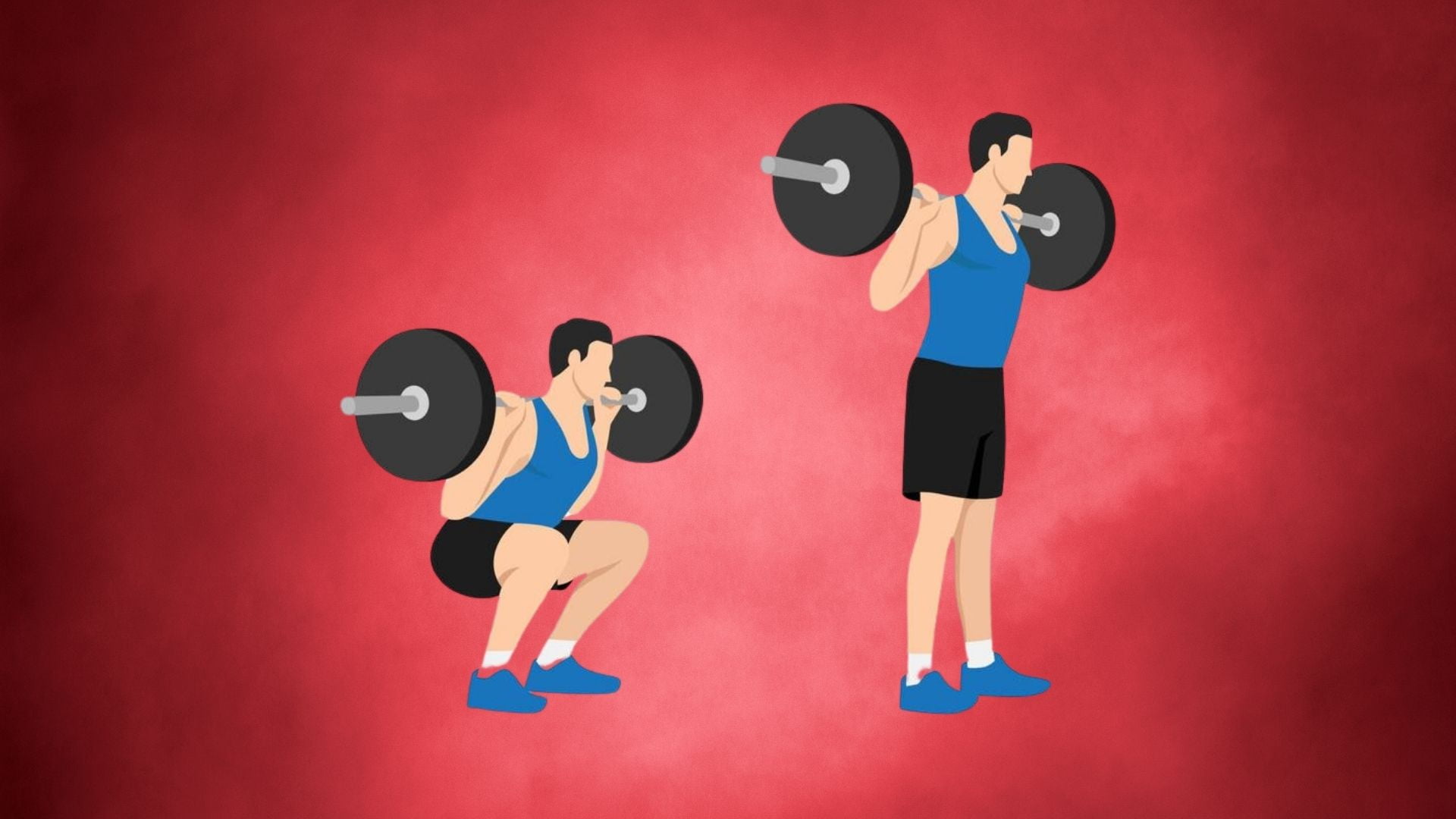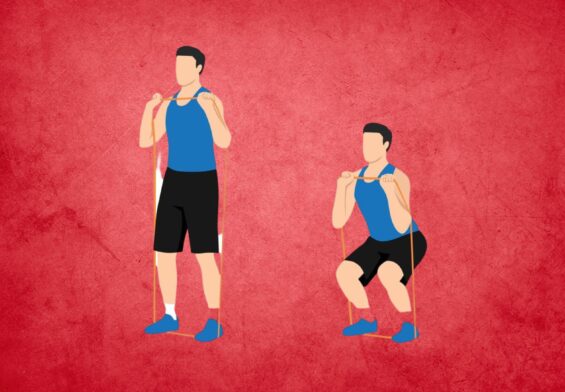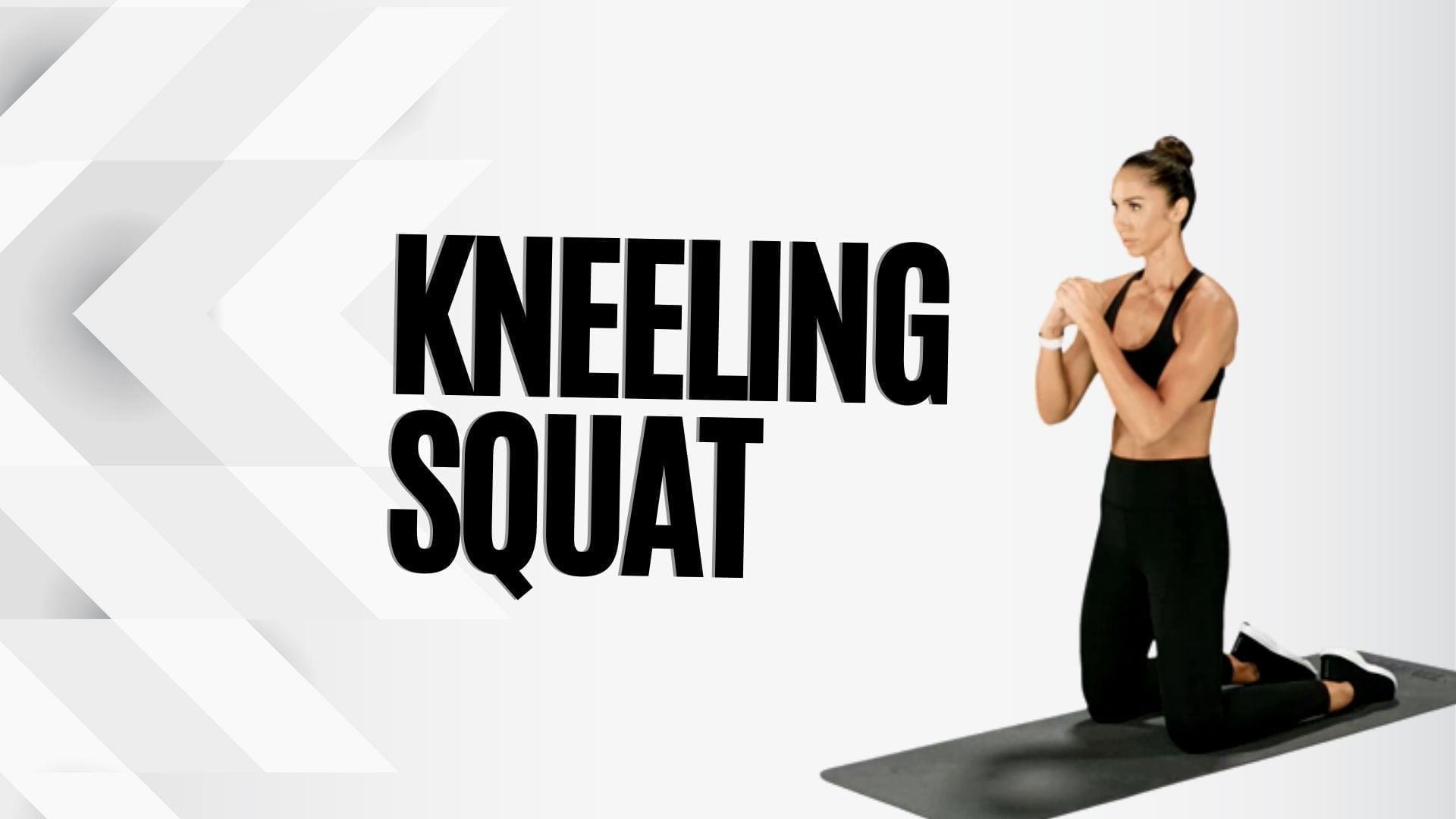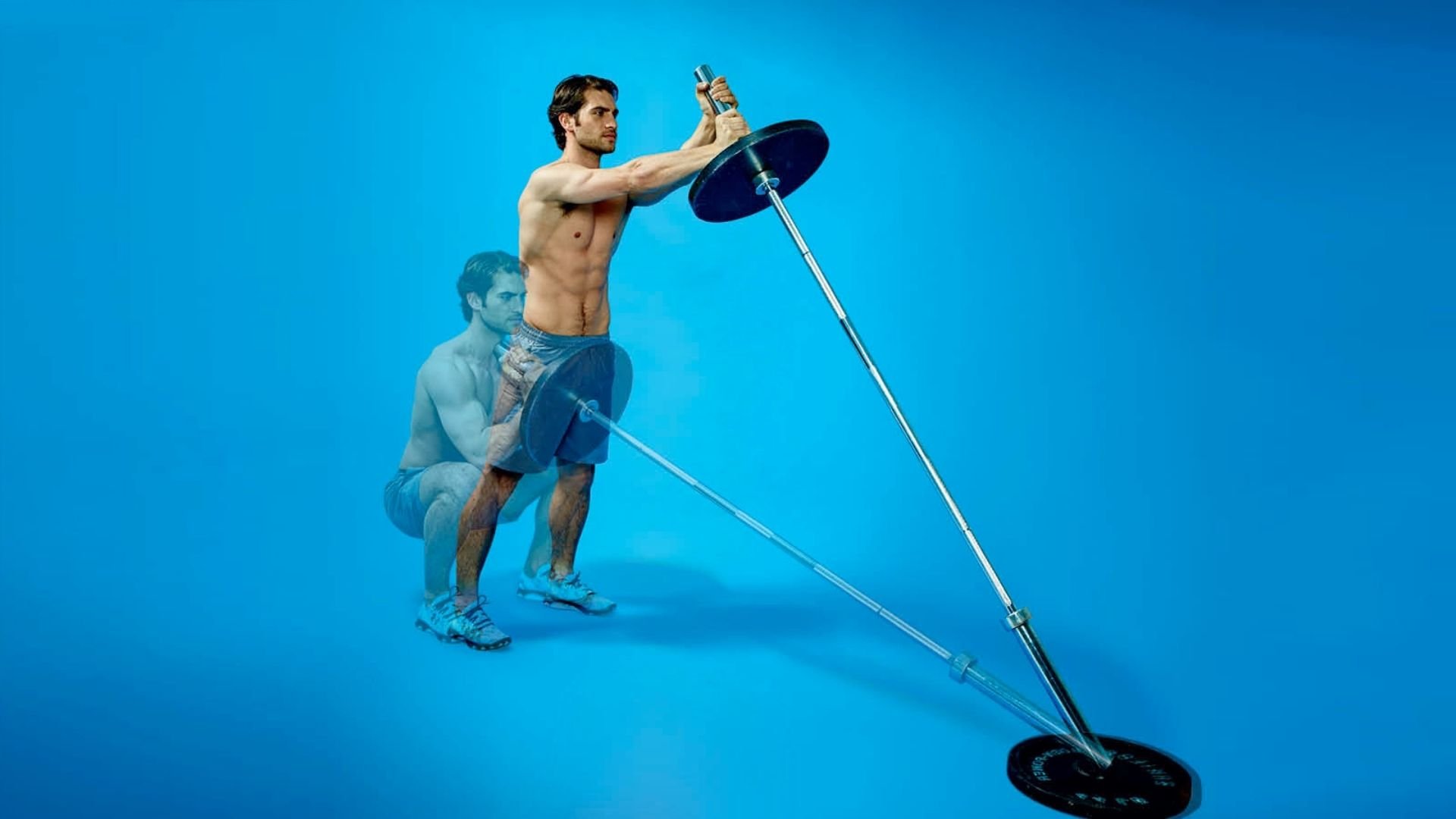
Barbell Back Squats: Build Stronger Lower Body
Are you looking to build stronger lower body muscles? Look no further than Barbell Back Squats! This exercise is a great movement that targets your legs, glutes, and lower back muscles, improving your strength and muscle tone. Here at FitGAG, we’ve put together an expert guide to help you get the most out of your Barbell Back Squats. Get ready to build stronger lower body muscles!
Exercise Information
The Barbell Back Squat is a resistance training exercise that targets the muscles in the lower body, including the quadriceps, hamstrings, glutes, and lower back. This exercise involves using a barbell on your shoulders while performing a squatting movement, which challenges the muscles in the legs and lower back. Let’s dive into some general information about this exercise:
Level
The Barbell Back Squat is a fundamental exercise that is suitable for individuals of all levels, from beginners to advanced.
Equipment
To perform the Barbell Back Squat, you will need a barbell and weight plates, a squat rack, and a flat surface to stand on.
Type of Exercise
The Barbell Back Squat is a compound exercise that targets multiple muscle groups, requiring multiple joints and muscle groups to work together to perform the movement.
Barbell Back Squats: Working Muscles
The Barbell Back Squat is a compound exercise that primarily targets the muscles of the lower body, specifically the quadriceps, hamstrings, and glutes. This exercise involves using a barbell with weight plates to add resistance to the traditional squat motion. In this section, we will discuss the primary and secondary muscle groups that are involved during the Barbell Back Squat exercise.
Primary Muscle Group: Lower Body Muscles
The primary muscle group targeted during the Barbell Back Squat exercise is the lower body muscles, specifically the quadriceps, hamstrings, and glutes. These muscles are engaged during the squatting motion to control the descent and ascent of the barbell.
Secondary Muscle Groups: Core and Back Muscles
In addition to the primary muscle group, the Barbell Back Squat exercise also engages the muscles of the core and back. The muscles of the core and back are engaged to stabilize the torso and maintain proper form during the squatting motion.
By engaging both the primary and secondary muscle groups, the Barbell Back Squat exercise provides a comprehensive workout for the lower body, core, and back. This makes it an effective exercise for building leg muscle strength and size, improving functional fitness for activities in daily life, and developing lower body power and explosiveness.
Stay tuned for the next section, where we will discuss the benefits of the Barbell Back Squat exercise.
Benefits of Barbell Back Squats
Barbell Back Squats are a classic exercise that targets your lower body and offers several benefits. Here are five benefits of incorporating this exercise into your fitness routine:
- Improved Lower Body Strength: Barbell Back Squats target your quads, hamstrings, and glutes, which can help improve your overall lower body strength and power.
- Increased Muscle Mass: Barbell Back Squats are a compound exercise, meaning they engage multiple muscle groups at once, which can help increase muscle mass and overall body composition.
- Improved Athletic Performance: Barbell Back Squats can help improve your athletic performance by strengthening your lower body muscles and improving your overall power and explosiveness.
- Improved Bone Density: Barbell Back Squats are a weight-bearing exercise, which can help improve bone density and reduce the risk of osteoporosis.
- Increased Calorie Burn: Barbell Back Squats are a high-intensity exercise that can burn a significant amount of calories and help you reach your weight loss goals.
By incorporating Barbell Back Squats into your fitness routine, you can enjoy these benefits and more. However, it’s important to start slowly and progress gradually to avoid injury and ensure proper form. Additionally, it’s important to incorporate a variety of exercises into your fitness routine to ensure you’re targeting all muscle groups and avoiding boredom.
Barbell Back Squats: Step-by-Step Instructions
The barbell back squat is a fundamental exercise for building strength and muscle in your lower body. Here are the step-by-step instructions for performing the barbell back squat:
Starting Position:
- Stand with your feet shoulder-width apart and position the barbell on your upper back, resting on your trapezius muscles.
- Grip the barbell with an overhand grip, with your hands wider than shoulder-width apart.
- Lift the barbell off the rack and step back, ensuring that your feet are shoulder-width apart and your toes are pointing slightly outward.
- Keep your core engaged and your back straight.
Now, let’s move on to the step-by-step instructions for the barbell back squat:
- Begin the movement by lowering your body down into a squat, keeping your back straight and your knees tracking over your toes.
- Lower your body until your thighs are parallel to the ground, or lower if you are able to.
- Pause briefly at the bottom of the movement, then explosively push back up to the starting position.
- Exhale as you push back up to the starting position, while keeping your core engaged and your back straight.
Repeat the movement for the desired number of repetitions.
Barbell Back Squats – Proper Form and Technique
The Barbell Back Squat is one of the most effective exercises for building strength and muscle in the lower body, particularly the quads, hamstrings, and glutes. This exercise requires proper form and technique to avoid injury and achieve maximum results.
Starting Position
- Stand with your feet shoulder-width apart, with the barbell resting across your upper back and shoulders.
- Grip the barbell with your hands slightly wider than shoulder-width apart, with your elbows pointing down and your chest lifted.
- Engage your core and glutes to maintain a stable base.
Proper Form and Technique
- Squat Down: Squat down by bending at the hips and knees, keeping your back straight and your chest lifted.
- Keep Your Knees Aligned: Keep your knees aligned with your toes throughout the movement, avoiding inward or outward rotation.
- Keep Your Feet Flat: Keep your feet flat on the ground throughout the movement, avoiding lifting your heels.
- Descend to Parallel: Descend to parallel or below parallel, depending on your flexibility and comfort level.
- Drive Up: Drive up through your heels, extending your hips and knees to return to the starting position.
- Keep Your Form: Keep your back straight throughout the movement and avoid arching or rounding your back.
- Breathe Deeply: Breathe deeply and regularly throughout the exercise to maintain your energy and focus.
- Gradually Increase Intensity: Gradually increase the weight on the bar or the number of repetitions or sets of the exercise over time as your legs become stronger.
- Incorporate into Your Routine: Barbell Back Squats can be a great addition to your leg training routine, helping you to build strength and muscle effectively.
By following these tips, you can perform the Barbell Back Squat with proper form and technique, building and strengthening your lower body effectively while minimizing the risk of injury. Remember to start slowly, focus on your breathing, and gradually increase the difficulty and intensity of the exercise over time.
Frequency and Progression: How to Get the Most Out of Your Barbell Back Squats
Barbell back squats are a classic exercise that targets the lower body, including the quadriceps, hamstrings, and glutes. In this section, we will discuss how to properly incorporate barbell back squats into your workout routine and how to progress with this exercise over time.
Frequency
To see significant results with barbell back squats, it is recommended to perform this exercise 2-3 times a week. However, it is important to listen to your body and avoid overtraining. If you feel any pain or discomfort, stop the exercise immediately. You can also alternate between barbell back squats and other lower body exercises, such as lunges or leg press.
Progressive Overload
To progress with barbell back squats, it is important to gradually increase the weight and difficulty of the exercise over time. Start with a weight that you can comfortably lift for 8-10 repetitions and gradually increase the weight as you become stronger. Another way to progress is to decrease the rest time between sets or increase the number of repetitions. However, it is important to avoid adding too much weight too quickly, as this can lead to injury.
Variations
To prevent boredom and keep your barbell back squat workouts fresh, it is important to mix up your exercise routine. You can perform barbell back squats with different foot positions, such as a wider stance or a narrower stance. You can also perform front squats or goblet squats, which target slightly different muscle groups. However, it is important to maintain proper form with each variation.
Proper Form
Proper form is essential when performing barbell back squats to avoid injury and get the most out of the exercise. Start by placing the barbell across your upper back, just below your neck. Stand with your feet shoulder-width apart and toes slightly pointed out. Slowly lower your body until your thighs are parallel to the ground, then push back up to the starting position. It is important to keep your abs tight, your back straight, and your knees in line with your toes throughout the exercise.
Track Your Progress
To ensure you are making progress and staying on track with your barbell back squat workouts, it is important to track your progress. Keep a workout journal or use a fitness app to log the weight, reps, and sets for each exercise. This will help you identify areas where you need to improve and keep you motivated to continue pushing yourself.
Incorporating barbell back squats into your lower body workout routine can be a great way to build strength and improve your overall fitness level. By following these tips for frequency, progressive overload, and proper form, you can ensure that you are getting the most out of your barbell back squat workouts and reaching your fitness goals.
Mistakes of Barbell Back Squats
Barbell back squats are a popular exercise for building lower body strength. However, like any exercise, there are common mistakes that can reduce its effectiveness and increase the risk of injury. Here are five mistakes to avoid during the barbell back squat exercise:
- Poor form: Using poor form during the barbell back squat exercise can reduce its effectiveness and increase the risk of injury. Ensure that your feet are shoulder-width apart, your knees are in line with your toes, your chest is up, and your lower back is flat.
- Lack of warm-up: Skipping the warm-up before performing barbell back squats can increase the risk of injury. Make sure to perform dynamic stretches and warm-up sets before performing the exercise.
- Using too much weight: Using too much weight during the barbell back squat exercise can increase the risk of injury and reduce the effectiveness of the exercise. Start with a weight that you can comfortably handle and gradually increase the resistance.
- Not going low enough: Not going low enough during the barbell back squat exercise can reduce its effectiveness. Ensure that you go low enough so that your thighs are parallel to the ground.
- Not breathing properly: Not breathing properly during the barbell back squat exercise can increase the risk of injury and reduce the effectiveness of the exercise. Inhale deeply before lowering the weight, and exhale forcefully as you push the weight back up.
By avoiding these common mistakes, you can ensure that you are getting the most out of your barbell back squat exercise while reducing the risk of injury. Remember to use proper form, warm-up properly, use an appropriate weight, go low enough, and breathe properly throughout the exercise. With consistent practice, you can build a strong lower body with the barbell back squat exercise.
Variations of Barbell Back Squat: Add Variety to Your Routine
The barbell back squat is a staple exercise for lower body strength and mass building. But doing the same exercise with the same weight and reps can become monotonous and hinder your progress. Here are some variations to incorporate into your barbell back squat routine to challenge your muscles and prevent boredom:
Pause Squats
Pause squats involve pausing at the bottom of the squat position for 2-3 seconds before exploding back up to the starting position. This variation increases time under tension, improves stability, and strengthens the quads and glutes.
Box Squats
Box squats involve squatting to a box or bench to ensure proper depth and form. This variation also strengthens the quads and glutes and improves explosiveness.
Front Squats
Front squats involve holding the barbell in front of the body instead of on the upper back. This variation improves core strength and targets the quads, glutes, and upper back.
Bulgarian Split Squats
Bulgarian split squats involve placing one foot on a bench or step behind you and performing a single-leg squat. This variation improves balance, stability, and single-leg strength.
Barbell Hack Squats
Barbell hack squats involve holding the barbell behind the legs and performing a squat. This variation targets the quads, hamstrings, and glutes and improves overall leg strength and mass.
Incorporating these variations into your barbell back squat routine can help you avoid plateaus, target different muscle groups, and improve overall strength and athletic performance. As always, make sure to use proper form and technique and gradually increase the weight and reps as your body allows.
Barbell Back Squats: 5 Alternatives to Build Lower Body Strength
Barbell back squats are a popular exercise for building lower body strength, but they’re not the only way to achieve this goal. If you’re looking for alternative exercises to add to your routine or don’t have access to a barbell, there are plenty of effective exercises you can try. In this section, we’ll explore five exercises that target your lower body and can help you build strength and muscle.
Goblet Squat
The goblet squat is a great exercise for building lower body strength, especially in the quads and glutes.
- Hold a kettlebell or dumbbell at chest height and squat down, keeping your knees over your toes and your chest up.
- Push through your heels to stand back up.
Bulgarian Split Squat
The Bulgarian split squat is a challenging exercise that targets your quads and glutes, as well as your balance and stability.
- Stand in a lunge position with one foot elevated behind you on a bench or step.
- Lower your back knee towards the ground, keeping your front knee over your toes, and then push back up to starting position.
Barbell Front Squat
The barbell front squat is a variation on the traditional back squat that places more emphasis on your quads and core.
- Hold the barbell in front of your body, resting it on your collarbone and front delts.
- Squat down, keeping your chest up and your elbows pointing forward.
Deadlift
The deadlift is a compound exercise that targets your entire posterior chain, including your hamstrings, glutes, and lower back.
- Start with your feet shoulder-width apart and the barbell on the ground in front of you.
- Bend down and grab the bar with a shoulder-width grip, keeping your back flat and your core engaged, and then stand up, driving through your heels.
Step Up
The step up is a unilateral exercise that targets your quads, glutes, and hamstrings, as well as your balance and stability.
- Stand in front of a bench or step and step up onto it with one foot, driving through your heel.
- Step back down and repeat on the other side.
Incorporating these exercises into your routine can help you build lower body strength and muscle, even if you don’t have access to a barbell or prefer to switch things up. Remember to start with a weight or difficulty level that challenges you but allows you to maintain proper form, and gradually increase as you get stronger.
Barbell Back Squats: Build Stronger Legs and Core with Proper Form
Barbell Back Squats are one of the most effective exercises for building stronger legs, glutes, and core. However, it’s crucial to perform them with proper form to avoid injury and get the most out of the exercise. Here are some tips and tricks to help you perform Barbell Back Squats correctly:
- Warm-Up: Before performing Barbell Back Squats, it’s important to warm up your legs, hips, and lower back. You can do this by performing some light cardio or dynamic stretching, such as leg swings or bodyweight squats.
- Choose the Right Weight: Start with a weight that you can comfortably handle and gradually increase the weight as you become stronger and more comfortable with the exercise.
- Proper Form: Start by standing with your feet shoulder-width apart and the barbell resting on your traps or shoulders. Grip the bar with an overhand grip, keeping your hands shoulder-width apart. Lower your body by bending at the knees and hips, keeping your back straight and your chest up. Make sure your knees are aligned with your toes and your thighs are parallel to the ground. Then, push up with your legs and return to the starting position.
- Engage Your Core: To perform Barbell Back Squats correctly, you need to engage your core throughout the movement. Focus on keeping your body in a straight line and avoid arching your back or leaning too far forward.
- Use the Right Repetition Range: Aim to perform 3-4 sets of 8-12 reps with Barbell Back Squats.
- Rest Between Sets: Rest for 60-90 seconds between sets to allow your muscles to recover.
- Mix it Up: Mixing up your Barbell Back Squats routine can help keep your workout fresh and challenging. You can try different variations, such as changing the width of your stance or adding a pause at the bottom of the movement.
- Stretch Afterwards: After performing Barbell Back Squats, it’s important to stretch your legs, hips, and lower back.
- Listen to Your Body: As with any exercise, it’s important to listen to your body and avoid pushing beyond your limits. If you feel any discomfort or pain, stop the exercise immediately.
Incorporating these tips and tricks into your Barbell Back Squats routine can help you get the most out of this highly effective exercise. Remember to always maintain proper form, engage your core, and listen to your body. With time and practice, you’ll be able to perform Barbell Back Squats like a pro and enjoy the benefits of stronger legs and core.
Incorporating Barbell Back Squats into Your Workout Routine for Maximum Effect
Barbell back squats are a classic compound exercise that work your entire lower body, including your quads, hamstrings, glutes, and calves. Here are some tips to help you incorporate this exercise into your workout routine for maximum effect:
- Warm up properly: Before performing barbell back squats, it’s important to warm up your lower body muscles with exercises like leg swings, lunges, and bodyweight squats. You should also warm up your upper body muscles with exercises like arm circles, shoulder rolls, and push ups.
- Use proper form: To perform barbell back squats, stand with your feet shoulder-width apart and place the barbell on your upper back, holding it with both hands. Keeping your back straight, bend your knees and lower your body until your thighs are parallel to the ground. Then, push through your heels to stand back up. Be sure to keep your core tight and your knees in line with your toes throughout the movement.
- Mix up your routine: Don’t just perform barbell back squats in isolation. Mix it up by incorporating other lower body exercises, such as lunges, deadlifts, and calf raises. You can also add cardio exercises like running or jumping jacks to create a full-body workout.
- Use progressive overload: To continue to see progress, you’ll need to use progressive overload, which means gradually increasing the weight, reps, or sets over time. Start with 3-4 sets of 8-10 reps with a moderate weight and gradually increase the weight over time.
- Don’t overdo it: It’s important to give your muscles time to recover, so don’t overdo it with barbell back squats. Aim to perform the exercise for 2-3 sets, 1-2 times per week.
- Focus on your breathing: It’s important to regulate your breathing throughout the exercise to ensure that you’re getting enough oxygen to your muscles. Inhale as you lower your body and exhale as you push back up.
- Engage your entire lower body: To get the most out of barbell back squats, make sure to engage your entire lower body throughout the exercise. This will help you maintain proper form and prevent injury.
- Rest between sets: Allow your muscles time to recover between sets. Rest for 60-90 seconds between sets to ensure that you’re performing each rep with proper form.
- Incorporate barbell back squats into your workout routine: In addition to incorporating barbell back squats into your workout routine, consider doing them as part of a circuit or a superset with other lower body exercises.
By incorporating these tips into your workout routine, you’ll be well on your way to maximizing the benefits of barbell back squats and achieving stronger, leaner legs.
Ultimate Workout Plan for Barbell Back Squats
Barbell back squats are one of the most effective exercises for building lower body strength, particularly in your glutes, quads, and hamstrings. Here’s a one-week workout plan to help you incorporate barbell back squats into your routine:
Day 1: Warm-up
- Warm-up: 5-10 minutes of cardio
- Barbell back squats: 3 sets x 8-10 reps
- Romanian deadlifts: 3 sets x 12 reps
- Leg press: 3 sets x 12 reps
- Walking lunges: 3 sets x 10 reps per leg
- Cool-down: 5-10 minutes of stretching
Day 2: Rest Day
Day 3: Upper Body
- Warm-up: 5-10 minutes of cardio
- Barbell back squats: 3 sets x 8-10 reps
- Bench press: 3 sets x 12 reps
- Bent-over rows: 3 sets x 12 reps
- Dumbbell lateral raises: 3 sets x 12 reps
- Cool-down: 5-10 minutes of stretching
Day 4: Rest Day
Day 5: Lower Body
- Warm-up: 5-10 minutes of cardio
- Barbell back squats: 3 sets x 8-10 reps
- Deadlifts: 3 sets x 12 reps
- Leg extensions: 3 sets x 12 reps
- Seated calf raises: 3 sets x 15 reps
- Cool-down: 5-10 minutes of stretching
Day 6: Rest Day
Day 7: Full Body
- Warm-up: 5-10 minutes of cardio
- Barbell back squats: 3 sets x 8-10 reps
- Pull-ups: 3 sets x 12 reps
- Dumbbell chest press: 3 sets x 12 reps
- Barbell bicep curls: 3 sets x 12 reps
- Tricep pushdowns: 3 sets x 12 reps
- Cool-down: 5-10 minutes of stretching
Remember to maintain proper form and technique when performing barbell back squats. Start with a lighter weight and gradually increase the load as you become stronger and more comfortable with the exercise. Keep your core engaged and your back straight throughout the movement, and avoid letting your knees collapse inward or shifting your weight onto your toes. With consistent practice and effort, you’ll be able to perform barbell back squats with ease and develop strong, toned legs.
Conclusion
Barbell Back Squats is an excellent exercise for anyone looking to build stronger lower body muscles. However, it’s important to use proper form and start with lighter weight before gradually increasing the intensity to avoid injury and get the most out of the exercise. Remember to keep your movements slow and controlled throughout the exercise, and engage your lower body muscles for maximum contraction. So, if you’re ready to take your lower body workout to the next level and build stronger muscles, give Barbell Back Squats a try with our expert guide. Thanks for reading, and keep fit with FitGAG!











